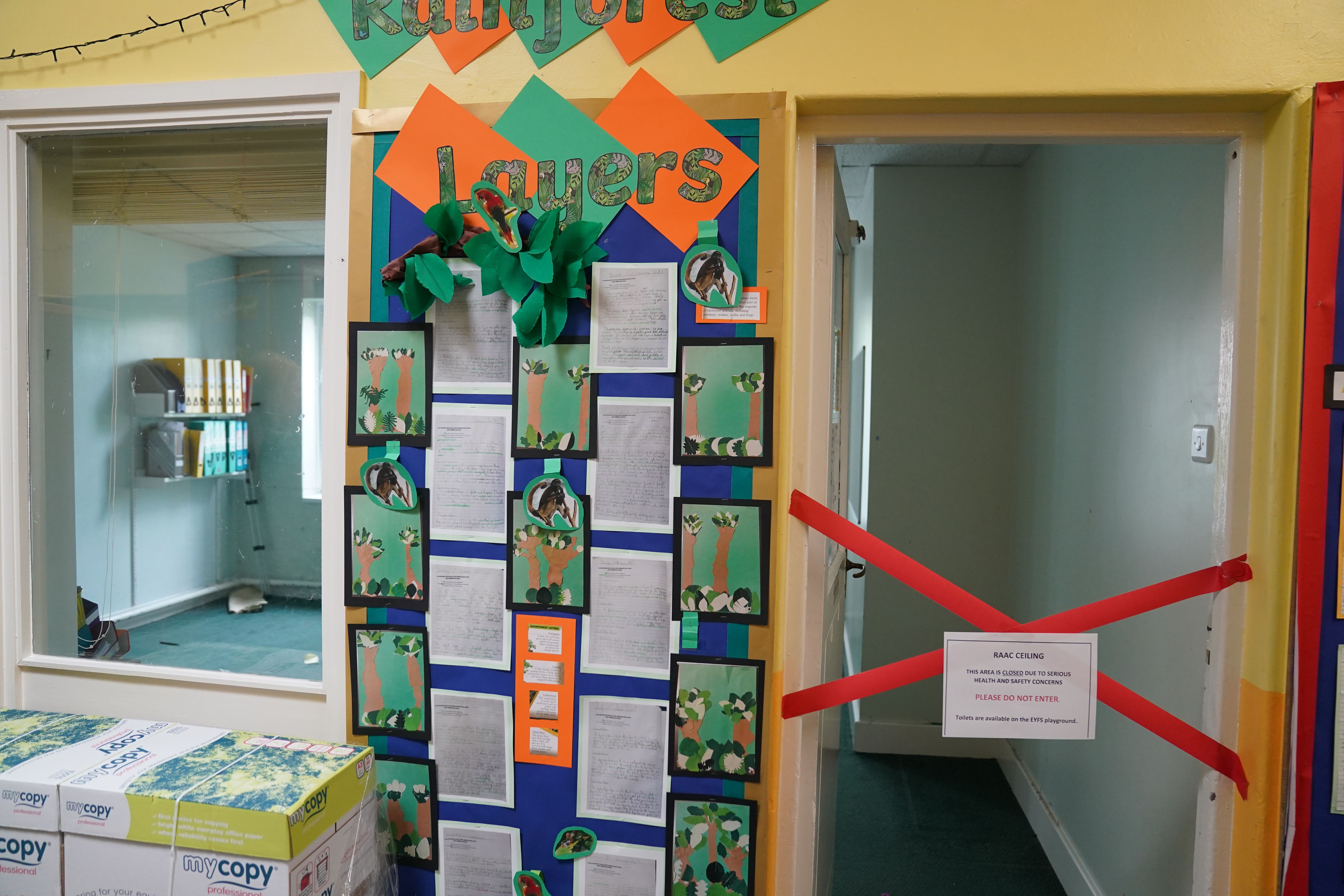Review of concrete risk in Scotland will take ‘some months’, says Yousaf
The First Minister said it would take some time to find out how many schools and other public buildings contained a kind of suspect kind of concrete.

First Minister Humza Yousaf has said a desk-based review of collapse-prone concrete will likely take “some months”, but has stressed that mitigations will be put in place where there is risk.
The Scottish Government confirmed that reinforced autoclaved aerated concrete (Raac) was found in 35 schools across Scotland, with local authorities in the process of checking other buildings.
But that review would take some time to complete, the First Minister has said.
More than 100 schools in England have been told to fully or partially close because of safety fears over the concrete, which was used in construction between the 1950s and 1990s.
Local authorities have given us returns for around 35 schools that tell us they have Raac in them and mitigations have been put in place to ensure that there is no immediate safety concerns for either the pupils or the staff that work there
Meanwhile, freedom of information requests from the Scottish Lib Dems show a number of universities and colleges have been impacted – with both Aberdeen University and Edinburgh University both reporting that eight of their buildings have been impacted.
Speaking to the PA news agency on Monday, Mr Yousaf said: “It was important to do the desk-based review, but it’s also fair to say that where NHS sites, in particular, feel there needs to be a physical investigation, then there will be a physical investigation if that’s required.
“Given the size of the estate we’re looking at, not just the NHS but the public sector estate, it will take some months to complete that fully.
“But, of course, it’s not a binary, it’s an evolving picture,” he added, claiming that “appropriate mitigations” will be put in place when the concrete is found.
The First Minister said: “Local authorities have given us returns for around 35 schools that tell us they have Raac in them and mitigations have been put in place to ensure that there is no immediate safety concerns for either the pupils or the staff that work there.”
Similar circumstances are found in health boards, he said, with staff “not waiting for the review to be completed” before taking action.
The First Minister’s comments come the day after one of his ministers said there was “no immediate risk” to the public concerning Raac.
Speaking to the BBC’s Sunday Show, Wellbeing Economy Secretary Neil Gray said: “At the moment, there is no immediate risk to people using these buildings and that is why we continue to support our local authority partners, NHS boards and others, that have Raac in their buildings to ensure that remains the case, and if there are issues to be resolved, that mitigations are taken to ensure people’s safety.”
The Education Secretary should be meeting with education leaders this week to discuss a rescue plan and funding for remedial work. Anything less would be an appalling dereliction of duty
Scottish Liberal Democrat leader Alex Cole-Hamilton called for Education Secretary Jenny Gilruth to meet with education leaders.
“Across Scotland we are finding more and more examples of this potentially dangerous concrete in use,” he said.
“We knew it was in schools, NHS buildings and police stations, now we know that it is present across our higher and further education campuses.
“Many of these colleges and universities have taken precautions to reduce the risk but with new evidence from England suggesting that even sites previously deemed safe can catastrophically collapse, it is time for the Scottish Government to come up with a proper plan of action for resolving this issue for good.
“The Education Secretary should be meeting with education leaders this week to discuss a rescue plan and funding for remedial work. Anything less would be an appalling dereliction of duty.
“The Scottish Government have known about the risks this concrete poses for a long time. It’s time for action to ensure that students and staff are safe.”
Louise Gilmour, Scotland secretary of trade union GMB, asked why schools had been closed in England, but the Scottish Government did not see fit to follow suit.
In the absence of hard, detailed information about the risk assessments already undertaken then blithe reassurance is a recipe for confusion and uncertainty
“So far, in Scotland, there are many questions but far too few answers,” she said.
“Exactly what safety checks have been done in Scotland and, if buildings have been checked, does the crisis unfolding in England demand those buildings are revisited?
“Why has the UK Government taken such dramatic action when, in Scotland, ministers offer only reassurance?
“In the absence of hard, detailed information about the risk assessments already undertaken then blithe reassurance is a recipe for confusion and uncertainty.
“Have ministers in England received advice and safety warnings that ministers here have not?
“The Scottish Government, education authorities, the NHS and every other public body must act with transparency and urgency to detail what checks have been made and what risks have been found.”
Subscribe to Independent Premium to bookmark this article
Want to bookmark your favourite articles and stories to read or reference later? Start your Independent Premium subscription today.
